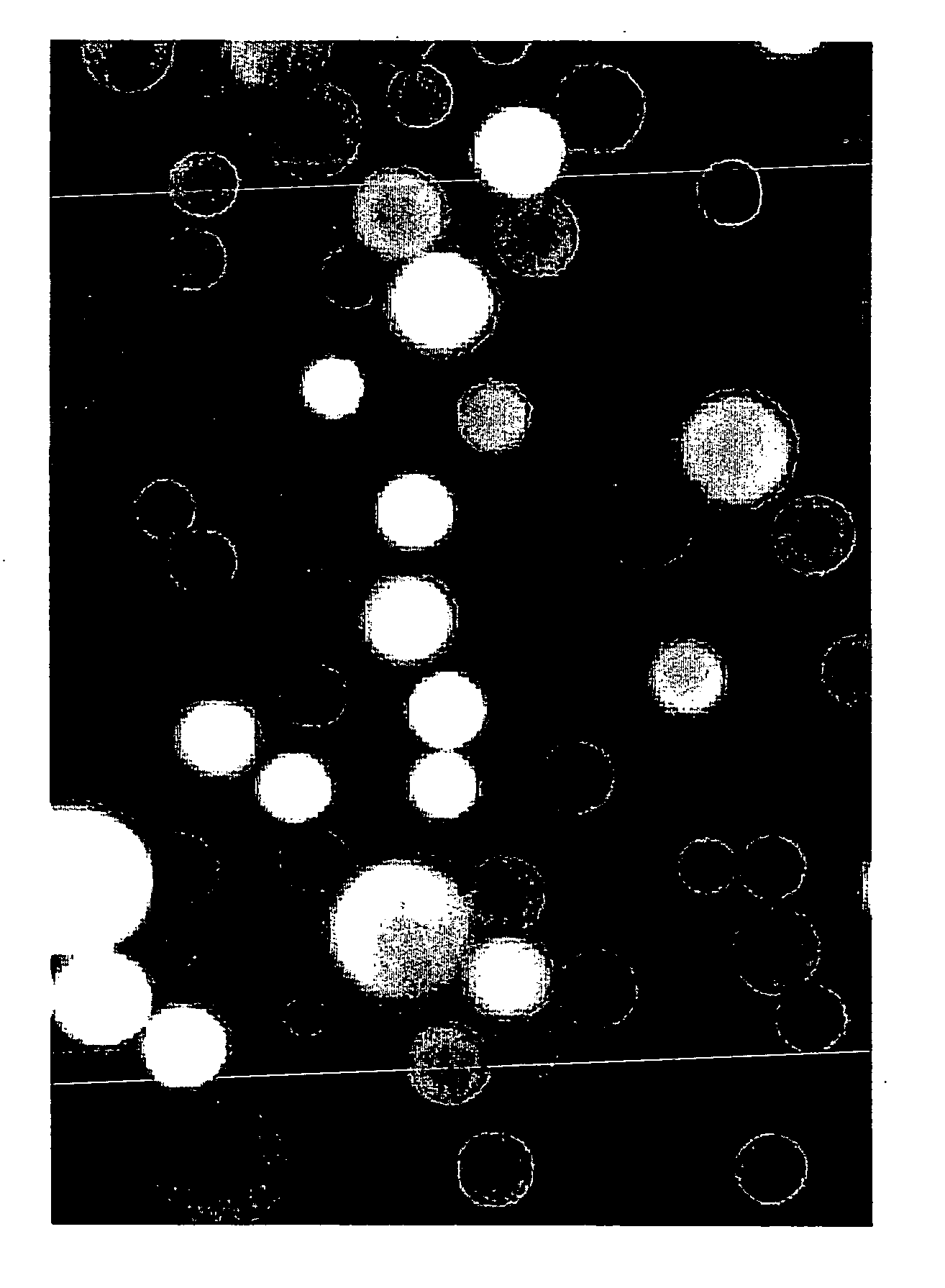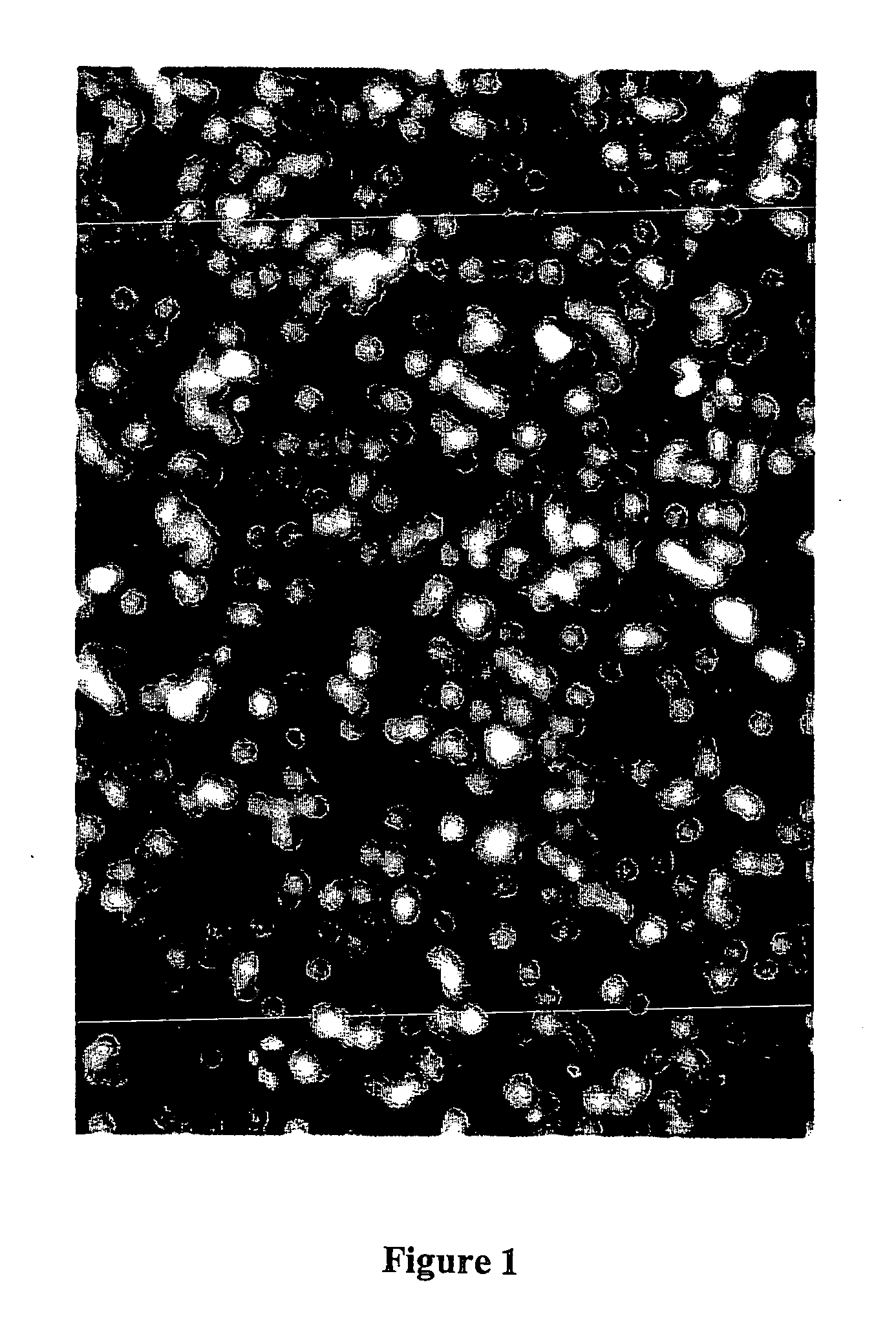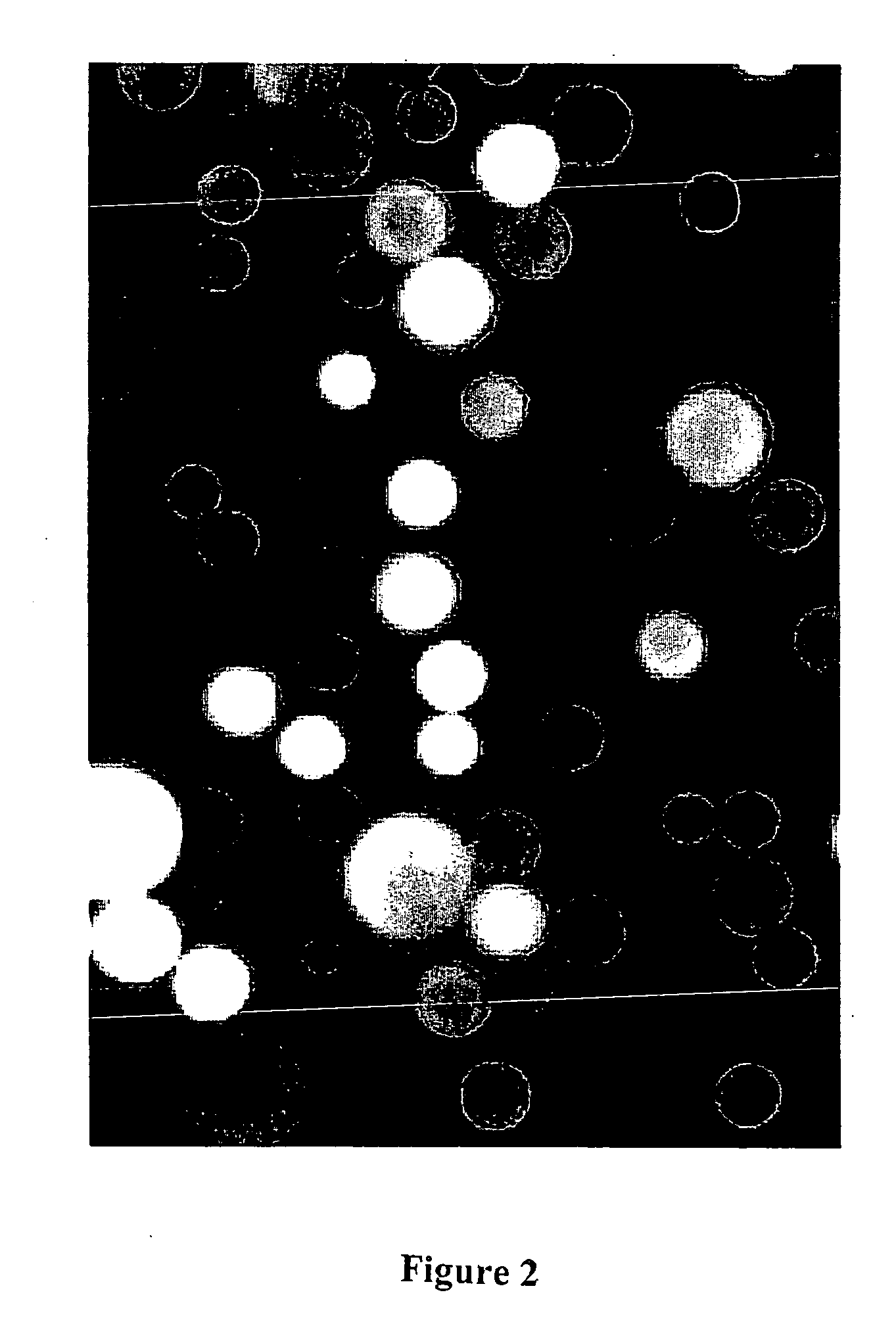High throughput screening assays utilizing affinity binding of green fluorescent protein
a green fluorescent protein and screening assay technology, applied in the field of biotechnology research and development, can solve the problems of reducing the cost of drug development, affecting the quality of drug development, so as to improve the quantitation, enhance the signal-to-noise ratio, and improve the effect of quantitation
- Summary
- Abstract
- Description
- Claims
- Application Information
AI Technical Summary
Benefits of technology
Problems solved by technology
Method used
Image
Examples
example 1
The Limits of Detection
[0091] Assume spherical bacterial cells (or e.g. trapping particle, bead, and the like), 1 μM in diameter. Such cells expressing GFP are easily detected by fluorescence microscopy.
[0092] Given the basic formula for volume (V) of a sphere:
V=4 / 3πr3, where r=radius of the sphere:
V=(4 / 3)(3.14)(0.5 μ M)3=(4)(0.125)10-12cm3(Rounding)=0.5⨯10-12cm3
[0093] If the 1 μM sphere were all (100%) GFP, of density (ρ)=1.3 g / cm3 then the amount (mass (m), in grams, g) of GFP readily visualized by fluorescence microscopy is:
V×ρ=m
(0.5×10−12 cm3)(1.3 g / cm3)=0.65 pg [0094] Converting to moles (MWGFP=27,000)
(0.65×10−12 g)(1 mole / 27,000 g)=2.4×10−17 moles [0095] And using Avagadro's Number to reduce moles to number of molecules:
(2.4×10−17 moles)(6.022×1023 molecules / mole)=14.4×106 molecules
However, recalling that this number is based on the unrealistic assumption that the hypothetical 1 μM sphere (e.g. bacterial cell or trapping particle) consisted 100% of GFP, a ...
example 2
Detection Limit on Conventional Fluorometers
[0110] Calibration curves were performed on three commercial fluorometers optimized for GFP detection, using GFP expressed in E. coli cells. The fluorometers include a Turner 110 filter fluorometer, a Hoefer TKO 100 fluorometer, and a computer-operated Thermo Lab Systems MFX fluorometric microplate reader.
[0111] The detection limit for the wild-type GFP on the Turner 110 was 5 pmoles per assay. To minimize scatter, the fluorometer was set to the 10× slit setting and E. coli cells were at OD660 of about 0.25—i.e. the determined limit is for nonturbid samples only. The sensitivity for the Hoefer TKO 100 was determined to be 12 pmoles per assay. This detection limit was essentially unaffected by scatter caused by the E. coli cells. The Thermo Labs MFX was determined to be capable of detecting GFP down to 10 pmoles per assay, a result also virtually not influenced by scatter.
[0112] By comparison, when the GFP from cells in a 200 μl micropla...
example 3
Trapping GFP by Hydrophobic Interaction
[0114] C4 derivatized silica beads, 5 uM in diameter, (reversed phase HPLC beads from BioRad product number 125-0134) were used to trap GFP by hydrophobic interaction. The C4 (n-butyl)-derivitized silica based beads were dispersed in methanol and then added to an aqueous solution of wild-type recombinant GFP. The GFP bound immediately to the beads by hydrophobic interaction, producing fluorescently labeled beads so intense in their fluorescence that, despite their tiny size, they can be easily viewed, individually, by the unaided eye on the surface of a hand held long wavelength (365 nm) UV lamp. In this case, the beads were viewed with a BH-2 Olympus fluorescence microscope using a high pressure mercury arc lamp and a blue excitation filter selected for optimal excitation of fluorescein. Results are shown in FIG. 1.
[0115] In all micrographs presented in this patent application, the ocular lens was 10×. In this particular view (see FIG. 1), t...
PUM
| Property | Measurement | Unit |
|---|---|---|
| area | aaaaa | aaaaa |
| area | aaaaa | aaaaa |
| excitation wavelength | aaaaa | aaaaa |
Abstract
Description
Claims
Application Information
 Login to View More
Login to View More - R&D
- Intellectual Property
- Life Sciences
- Materials
- Tech Scout
- Unparalleled Data Quality
- Higher Quality Content
- 60% Fewer Hallucinations
Browse by: Latest US Patents, China's latest patents, Technical Efficacy Thesaurus, Application Domain, Technology Topic, Popular Technical Reports.
© 2025 PatSnap. All rights reserved.Legal|Privacy policy|Modern Slavery Act Transparency Statement|Sitemap|About US| Contact US: help@patsnap.com



